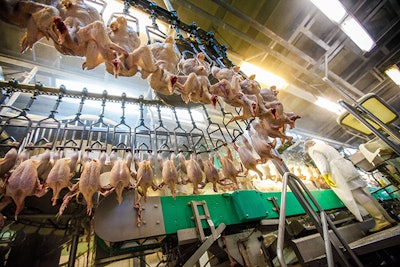
The implementation of automated solutions could help future-proof the poultry industry against workforce challenges and improve talent management and retention, Alex Chausovsky, director of analytics and consulting, Miller Resource Group, said during Labor Outlook and Case Studies in Automation Solutions.
The current state of the poultry workforce
The poultry and meat industries, alongside several other markets, is currently experiencing a major labor shortage. The COVID-19 pandemic accelerated these workforce issues.
Prior to the pandemic, the U.S. labor force numbered 165 million. Today, that number dropped to 163.2 million, resulting in two million fewer workers than 2020.
Unemployment has also dropped to a pandemic low of 3.9%, illustrating how difficult it can be for employers to fill open positions. In addition, job openings currently exist at record levels, with manufacturing and meat/poultry processing as one of the most prominent sectors looking to hire workers.
All these factors work together to mean that there are fewer than 0.6 individuals per job opening in the U.S. This puts a tight squeeze on companies looking to hire and disrupting typical talent supply and demand patters.
“This is a completely different labor market than what we saw prior to the pandemic and even the years before that,” Chausovsky explained.
Benefits of poultry processing automation
Poultry automation not only offers throughput and efficiency benefits, but it also gives processors the opportunity to redeploy their current workforce.
The ultimate goal of automation is not to entirely replace workers at meat and poultry processing plants, but instead to find ways to augment or enhance the worker experience. When done correctly, technology can minimize downtime, improve worker safety and reduce human error.
By automating a process that can be done by a machine, people can be redistributed into open positions. Chausovsky calls this an opportunity to do more with less.
“It’s vital to think of automation solutions to not only alleviate some of the pressure that you’re feeling in the job market, but also to increase efficiency and throughput, to deploy people in other positions where they’re going to add more value to your organization and as a part of a really thorough talent solution,” he added.


















